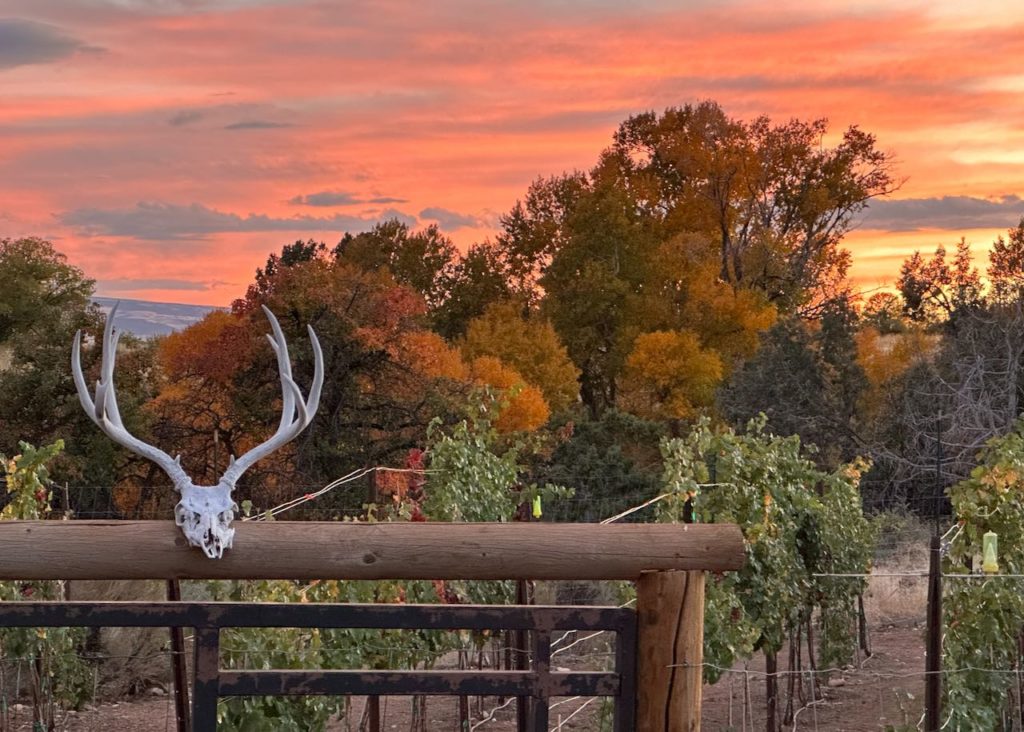
October 2023 - Harvest
"The heat of autumn is different from the heat of summer. One ripens the grapes, the other turns them to wine"
-Marshall's wine encore -
Hijacked from Jane Hirshfield's quote referencing apples and cider
Fall was upon us, and with it the harvest. Summer hadn’t completely loosened its grip. Temps were mild but unfortunately, the Yellow Jackets originating in August still ruled the roost. While I harvested a small amount of my Pinot Noir in September, the Riesling and the valley’s bounty was yet to come.
And come it did.
Closing September with the successful conclusion of our three-week-long water shortage (September’s Chronicle) was a blessing. There is something about not having water, which goes to your very soul. You can set aside vineyard and landscape water needs cause as General Jack Ripper in Stanley Kubrick’s Doctor Strangelove would remark, it encompasses our “precious bodily fluids” of which we can’t do without. In Rippers’ version, it would be “non-fluoridated” but for our purposes, that’s beside the point.
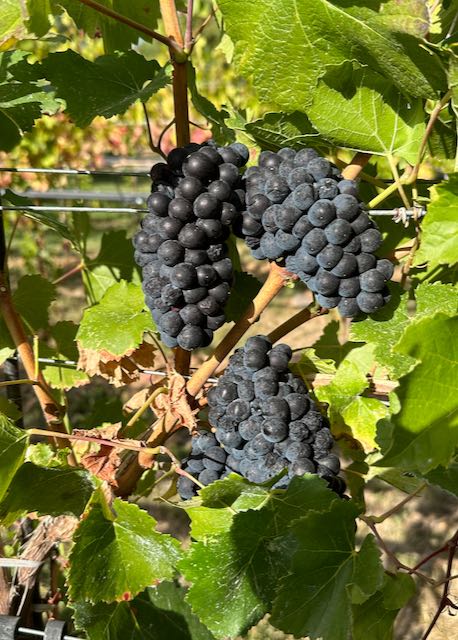
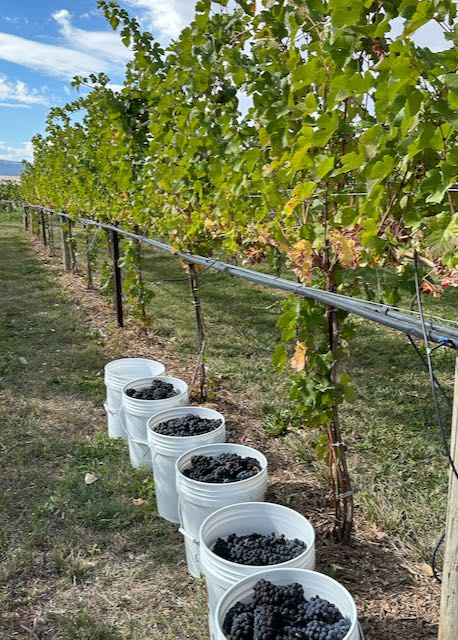
As October opened, you found me at The Villa Vineyard harvesting Pinot Noir. The day was bright and sunny, perfect. The Villa’s proprietor assisted, which sped things up. In the end, I headed home with 135 pounds, which after crushing and destemming resulted in 12 gallons of must.
With the must residing in a large container awaiting primary fermentation, I took the opportunity to test the juice for Brix (sweetness – 24.75) and pH (relative acidity versus the relative alkalinity – 3.28). The numbers translate as high on the Brix scale for a desired delicately designed Pinot Noir and a lower than preferred pH.
That’s okay. I added a small amount of water to the must, lowering the Brix to 23. I’ll live with the pH, the fermentation process ending with malolactic fermentation should bring the pH closer to normal. I added a small amount of SO2 bringing the must to 30 parts per million. The SO2 keeps bacterial beasties at bay including wild yeasts. No…sulfite usage is not bad. It is essential helping to reduce spoilage and oxidation, and is commonly used in winemaking.
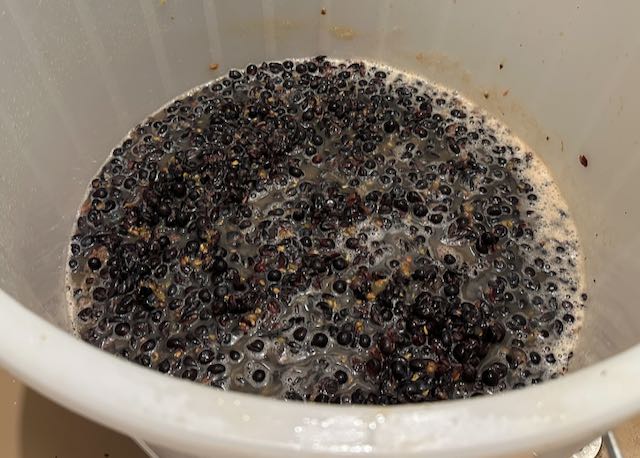
The next day I pitched the yeast and over 10 days of fermentation, punched down the cap twice a day. At this point, the Brix was at 4. No sugar equals 0 Brix, the ultimate desired outcome. But I had to get out of Dodge in two days so time to press. The result came to 9.5 gallons of wine.
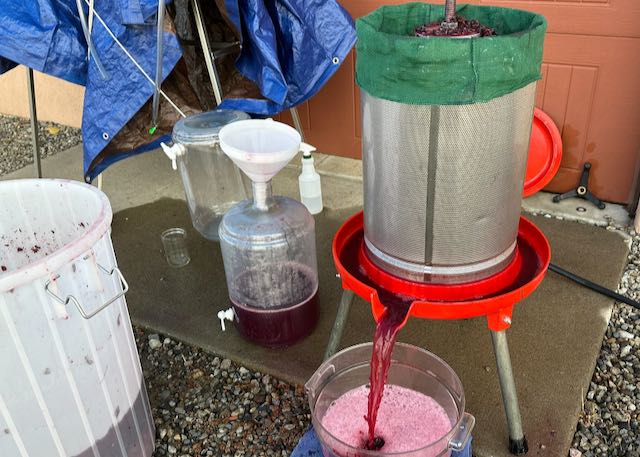
Two days after harvesting the Pinot, it was time to pick my Riesling. The task was arduous. Insect bags surrounding each grape cluster required removal. Remember the Yellow Jackets? The bags did a great job of protecting the clusters so the extra effort was worth it. Though the little yellow and black buggers continued to hound me as I removed the bags. Note the pic below of me holding a cluster and what do you see in the corner? You’ll also see the bags behind me as I move down the row.
With 50 pounds of grapes in hand, I ran them through the crusher and destemmer, and immediately pressed the must. The pressed juice was then moved to a 3-gallon container for fermentation. The numbers were decent, though the Brix was high at 23.75, with the pH perfect for Riesling, 3.25. Around 5 Brix towards the end of the month, I racked (transferred) the wine to two-gallon jugs to finish fermentation.
Within a few days of having 100 percent of my grapes harvested, the Yellow Jackets tamed themselves. I loaded up a dozen traps with fresh bait around the vineyard but weirdly enough, they didn’t care. But they continued to care about a 55-gallon trashcan half full of pomace—the pressed Pinot grapes. There is always a certain level of sugar remaining in the grapes after pressing, and the Yellow Jackets were tuned in.
At this point, I did what Chris Isaak sings about in his song “Baby Did a bad bad thing“. I sprinkled the top of the pomace with Sevin, a well-known insecticide. The little buggers could track through the Sevin, taking it back to their bugger nests killing them, and a few of their friends.
While unclear of the efficacy of the approach, it sure felt good and hopefully, was making a dent in the potential of next year’s yellow and black population
There remained three vineyard tasks remaining to close off the season.
First, increase vine irrigation until a week before an expected freeze. Having excess moisture in the ground facilitating late season and winter root growth can be helpful for the vines.
Second, mound soil around the base of the first-year vines to protect the tender ground-level graft unions from excessively cold winter temps.
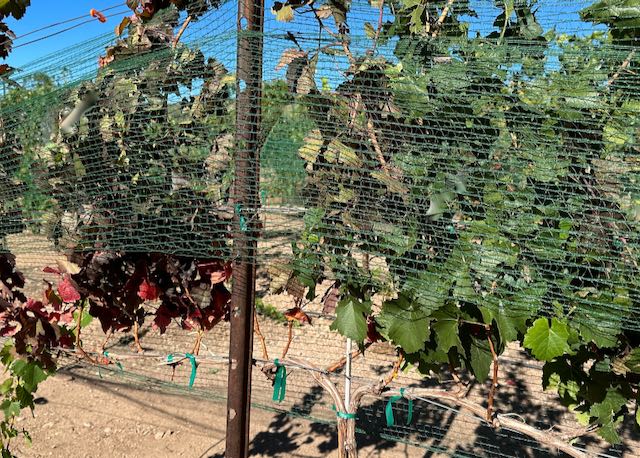
Third, mark first and second-year struggling vines for potential replacement next season. The task provides a somewhat accurate estimate of the number of grafted rootstock to order in the coming off-season. I’ll order a few additional vines as insurance since winter can provide unpleasant surprises.
In addition, there are a handful of third-year vines seemingly exhibiting an issue. Not so much for replacement—though the outcome is possible—but to have them on next season’s “watch list”.
The vine photo above illustrates the situation. The vine has two trunks, one cordon (arm) running the growth wire to the left, and the other trunk’s cordon to the right. Take note of the red leaves associated with the vine’s upward-reaching canes on the left cordon, and the green leaves to the right.
The cordon’s canes on the left are either shedding leaves early for winter or more than likely, dying off. The cordon and associated trunk is probably not well.
I flagged the left cordon and similar exhibiting cordons in the vineyard—eight in total. I’ll watch with Bud break in the spring whether the flagged cordons experience normal growth. If not, I’ll cut the trunks at the base of the vine, and encourage new growth from buds around the cut.
With the month’s end in sight and no freeze yet, the season’s harvest wasn’t done.
Connecting with a grower in the valley via The Villa Vineyard grower, an opportunity to harvest abundantly growing Riesling came about. There was much for the taking, and after five hours I came away with 175 pounds. There remained a surplus on the vines but I was kaput. The Riesling hadn’t been pruned during the season and growth was wild and wooly, more taxing when picking.
The grower believed the Brix would be low, with high acid. Sure enough, the Brix came in at 17.5 (20 to 22 preferred), pH at 2.70 (3 or above desired), and Acid at 17 (undesired “way” high).
I quickly decided to whole cluster press the grapes without crushing and destemming, to limit the level of “greenness” and “bitterness” in the resulting juice.
After consultation with The Villa Vineyard winemaker, I added sugar bringing the Brix to 20 and Potassium Bicarbonate, to raise the pH and lower the Acid.
Success!
My additions raised the pH to 3.1 and lowered the Acid to 12.75. While the Acid remained high, fermentation would probably reduce it further.
End result—7 gallons of juice awaiting the yeast.
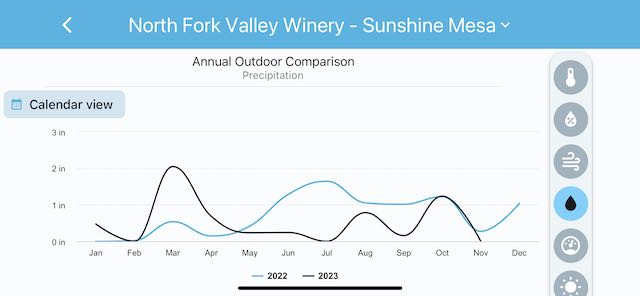
End of October rain of 1.1 inches. After a dry late spring and summer, the event raised 2023’s precipitation to 9 inches, closer to 2022’s amount of 11.6.
“The wine made itself” is a common refrain of winemakers.
It is an acknowledgment of the importance of harvesting grapes when they’re at their optimum state for the wine planned by the winemaker. When such a state is reached, little intervention is required of the winemaker as wine proceeds in its journey to the bottle.
It can be challenging to get to the optimum state.
For this reason, I provided the level of harvest detail and testing results with this post—to provide readers an idea of the thought and effort involved in coming to terms with what the field provides.
Hopefully, I’ve made the correct early adjustments, which should limit future interventions as the wines settle, age, and go to the bottles.
If you’d like to educate yourself further about testing’s role in the winemaking process, feel free to navigate to the Testing Topic Block of my website for further guidance.
We leave October with the growing season ended, and the landscape ablaze.
Having successfully prepared for its ending and with a hard freeze of 20 degrees under our belt, the vineyard is officially put to bed.
There are young wine-tending tasks during the winter to keep me busy but most importantly, completing a master plan for Yellow Jacket control during the 2024 season is paramount.
Our next 2023 Chronicles entry before the end of the year will focus on lessons learned from my first season with grapes.
Stay tuned—see you in the vineyard!
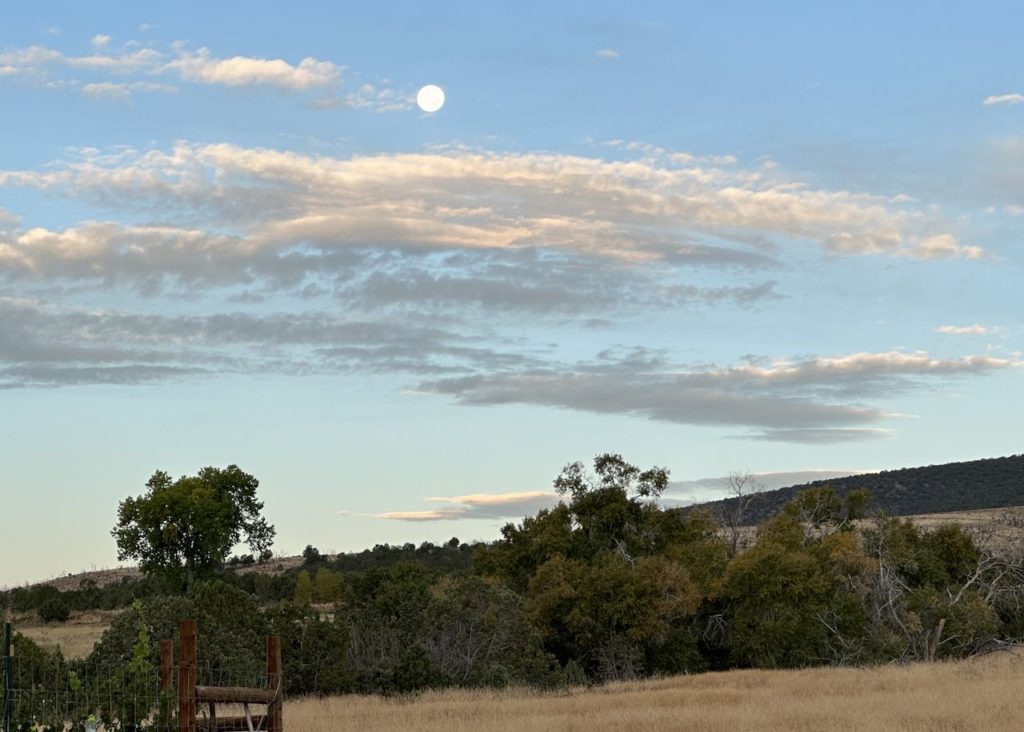


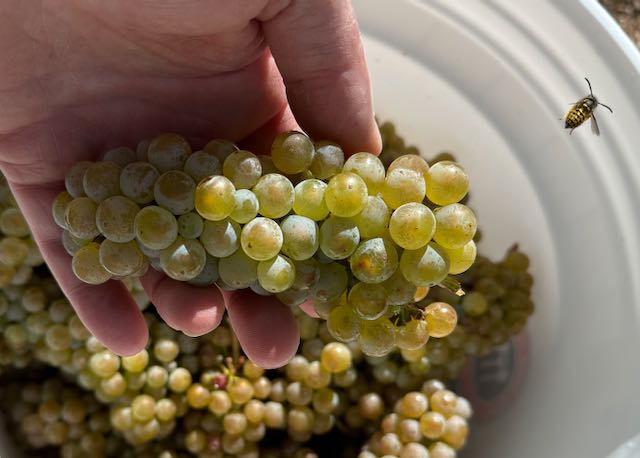
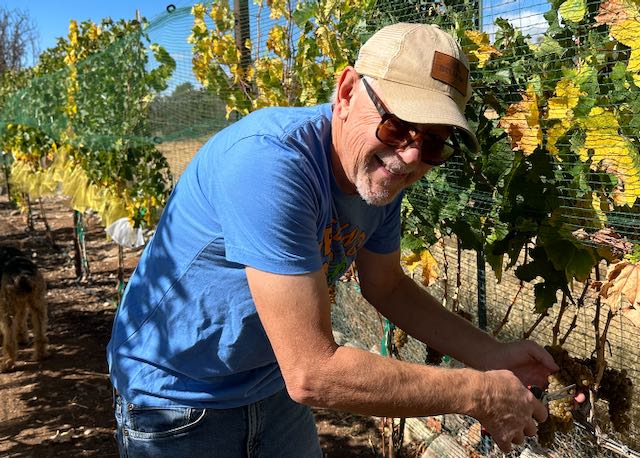
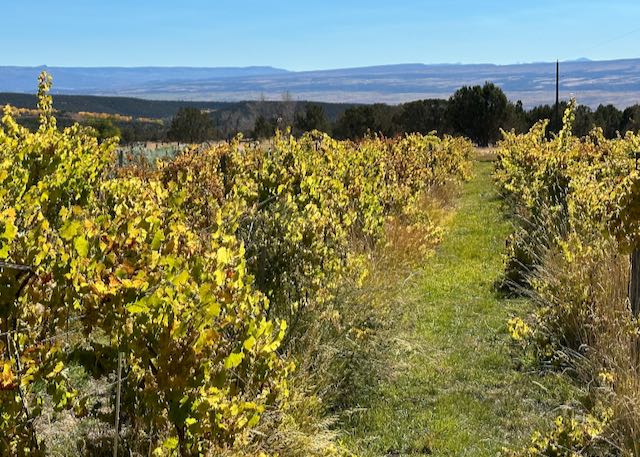
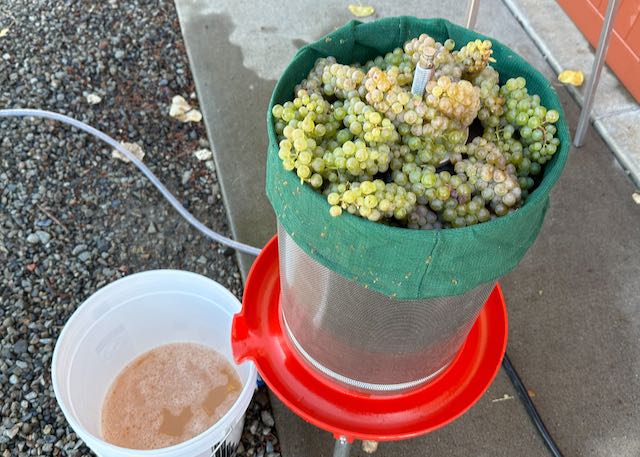

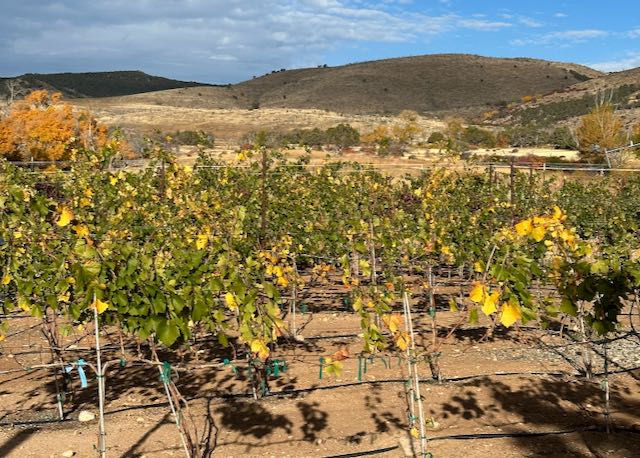
Was the pH of the Pinot Noir really 2.75 with a Brix reading of 24.75? Am I missing something here????
Thanks for the answer
Thanks for the question DG. Typo on the author’s part. It’s been fixed, proper pH was 3.28, much closer to normal than 2.75!